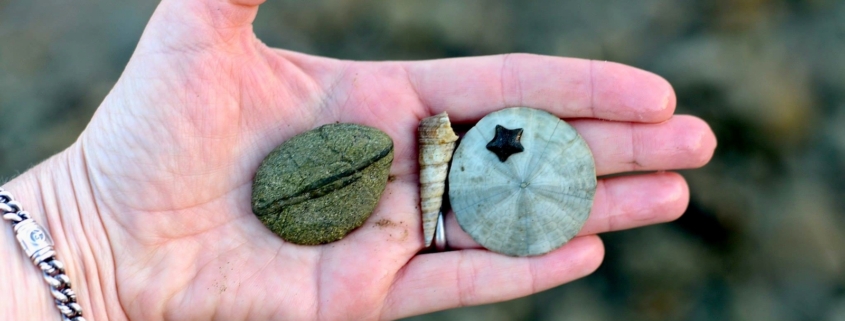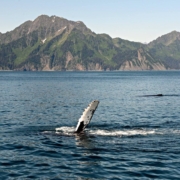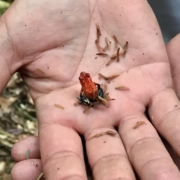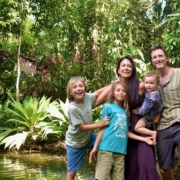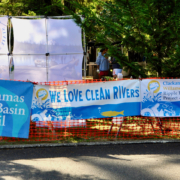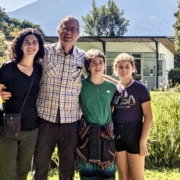Happy Earth Month!
Familiar are the phrases, “Think Global, Act Local,” and “Make Every Day Earth Day!” Well, you can, even when you are traveling! Throughout April, in celebration of Earth Month, we shared some information about single-use plastics and sustainable aviation to help inform traveling families about reducing their ecological footprint. Here’s a recap:
Break Free From Plastic!
If we want to leave a healthy and beautiful Planet Earth for our grandkids and their grandkids and seven generations hence, we need to consider the consequences of our choices, like using plastic.
Single-use plastic is any plastic that is used only one time, and then is thrown away. When plastic is tossed out (which 90% is), it has catastrophic effects on the land, air, sea, animals and people. Your old flip flops, plastic sunglasses and rubber duckies end up floating on the surface of the ocean in massive gyres such as the Great Pacific Garbage Patch. Other plastics break down into tiny particles and make 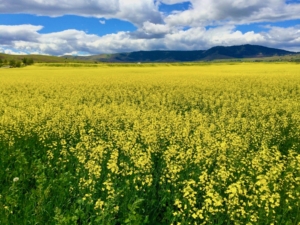 their way up the food chain. Plastics have been detected in corals, mussels, barnacles, fish, birds and marine mammals. Scientists have even detected microplastics in the falling rain and in human blood. It’s ubiquitous, and it’s bad. But you can make a difference.
their way up the food chain. Plastics have been detected in corals, mussels, barnacles, fish, birds and marine mammals. Scientists have even detected microplastics in the falling rain and in human blood. It’s ubiquitous, and it’s bad. But you can make a difference.
Here are eight things family travelers can do to be part of the solution:
- Plan ahead and buy gear wisely – carry a lightweight/portable water filter instead of buying water in plastic bottles; purchase bamboo toothbrushes and combs, carry reusable storage containers to avoid styrofoam packaging.
- Put together a clever travel kit that includes metal utensils and straws, a reusable bowl, thermos, and cup.
- Shop at local markets instead of grocery stores to avoid plastic wrapping on produce. (The local, fresh fruit and veggies taste better too!)
- Skip the straw when ordering a beverage or say “no thanks” when offered a straw.
- Always have three reusable shopping bags with you and of course a refillable water bottle + steri-pen.
- Support organizations doing clean up work. We love and volunteer with the Inland Ocean Coalition, which clears debris from rivers that will flow into the oceans. It also helps the freshwater ecosystems along the way. Surfrider Foundation and other coastal protection groups organize beach clean up events in many coastal locations.
- Check out and follow the global movement #breakfreefromplastic and #plasticfree.
- Learn from the locals – many countries and cultures do not rely on single-use plastic. What approaches can you incorporate into your life?
Sustainable Air Travel
Many family travelers these days have read about sustainable air travel and are eager to learn more with the hope of reducing their traveling carbon footprint.
To deepen our understanding, we interviewed two experts in the field – David Powell, PhD, Stanford University Professor Emeritus of  Mechanical, and Aeronautical and Astronautical Engineering, who also happens to be a pilot and also happens to be Annika’s father! We also interviewed Andrew Gettleman, PhD, an Atmospheric Scientist with Pacific Northwest National Laboratory and former Visiting Professor at University of Oxford, UK, who also happens to be a lifelong traveler and also happens to be Julie’s neighbor!
Mechanical, and Aeronautical and Astronautical Engineering, who also happens to be a pilot and also happens to be Annika’s father! We also interviewed Andrew Gettleman, PhD, an Atmospheric Scientist with Pacific Northwest National Laboratory and former Visiting Professor at University of Oxford, UK, who also happens to be a lifelong traveler and also happens to be Julie’s neighbor!
The upshot of our conversations is this: While air travel accounts for just 3% of global climate impacts, every industry needs to do its part if we, as a global community, are going to achieve carbon neutrality by 2050. The industry has heeded the call, and today there is a robust and exciting conversation among many scientists, engineers, policymakers, and industry leaders. Viable options already exist.
Here are some of the solutions in practice and in the R&D pipeline:
First, Sustainable Aviation Fuel, or SAF, is being produced and commercial airlines are buying it by the millions of gallons. It’s made from non-petroleum based products like corn, wheat, algae, greases, and other agricultural residues. SAF emits substantially less carbon than jet 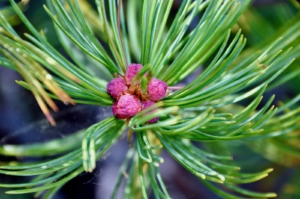 fuel made from petroleum. Good news: the current generation of jet engines can use a blend of SAF and traditional fuels without any hardware modification (90% SAF + 10% petroleum based). Additionally, once we are all driving electric vehicles, there will be a lot of corn-based ethanol available for air transport!
fuel made from petroleum. Good news: the current generation of jet engines can use a blend of SAF and traditional fuels without any hardware modification (90% SAF + 10% petroleum based). Additionally, once we are all driving electric vehicles, there will be a lot of corn-based ethanol available for air transport!
Second, electric airplanes and hybrid electric airplanes are in the skies and will be part of the long-term solution. Electric planes run on batteries, and one of the biggest challenges is the weight to energy ratio, or energy density. Electric planes can definitely serve regional or shorter-distance flights, and once enough of our kids go into STEM fields, we may see viable long-distance electric airplanes in the mix of solutions.
Third is hydrogen fuel cells, a promising route to emissions-free propulsion, including in the air. Hydrogen fuel cells generate electricity by electrochemical reaction – hydrogen and oxygen – rather than combustion. Hydrogen can be produced from many types of processes and sources, even from seawater. Powering aircraft with hydrogen fuel cells is significantly more efficient than internal combustion, and when we crack this nut, we will have carbon-free propulsion.
Pr. David Powell assures us that sustainable air travel is “on the horizon,” and it will come with a mix of these technologies and others. It’s a balancing act of cost, weight, and energy density. Science and innovation are working to combat climate change and meet consumer demand in brilliant ways.
Dr. Andrew Gettleman assures us that we can speed up our path to net zero by looking at system-wide opportunities. For example, rerouting planes around regions where contrails readily form can reduce the warming effect.
As family travelers, there are a number of ways we can reduce our carbon footprint. For example, we can take fewer flights or, where available, take trains, buses, or electric vehicles. We can vote with our pocketbook and, where possible, choose flights or airlines that are promoting sustainability. Many airlines have responded to consumer demand by offering carbon offsets. Offsets function like a certificate that can be traded to lower the amount of CO2 in the atmosphere. If you purchase an offset, your dollars fund climate change projects like reforestation or renewable energy. The CO2 emitted from your flight is “offset” somewhere else by one of these projects. NOTE: There has been fraud in this market, so if you elect to purchase an offset, it’s important to make sure it’s a certified program. The Points Guy has a good article here that compares the airlines offering offsets.
One of the many wonderful things about long-term travel is that we can be thoughtful, deliberate, and conscientious with our choices, even if something takes more time. So think global, act local. Happy Travels and Happy Earth Month!
For more tips on sustainable travel, please sign up for our newsletter here on our website. We’ll continue to share insights, resources, and tips to support family travelers.

